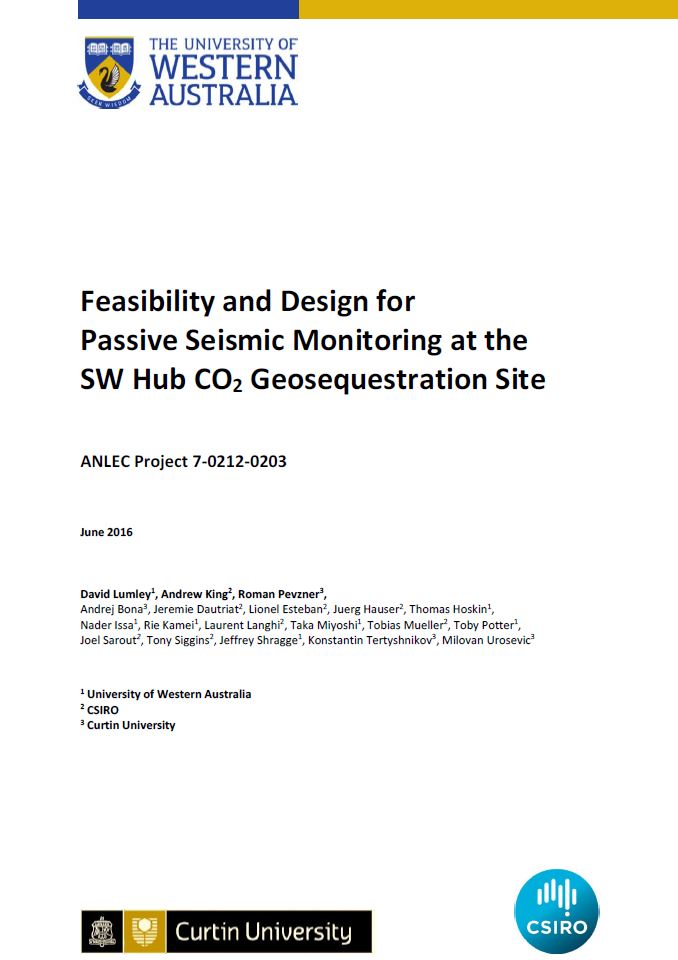Project Summary
Passive seismic monitoring can be useful in CO2 geosequestration (storage) projects.
The objectives of the study are:
- Measure and predict the expected microseismic energy at the SW Hub site by making geomechanical lab measurements on cores taken from wells at the site.
- Measure and characterise the natural seismicity and signal/ noise conditions at the SW Hub site with a small field test array of passive seismic sensors in shallow boreholes.
- Simulate realistic 3D seismic wavefields using supercomputing algorithms, develop and test innovative 3D seismic wave-equation and VSP imaging methods to improve images of the subsurface with passive seismic array data.
- Develop methods to optimise the sensor array design, in order to maximise the ability to detect/ image microseismic events at the SW Hub and other CO2 geosequestration sites.
Computational studies include:
- High-performance computational (HPC) modelling of 3D elastic passive seismic wavefield data, using a highly optimised, parallel algorithm on the Magnus cluster at the Pawsey Supercomputing Centre.
- Microseismic events were successfully simulated within a reasonable computation time using 1,536 CPU cores in parallel. Hypothetical microseismic source events were simulated in 3D as if located along faults in the Wonnerup or Yalgorup members, with two types of common microseismic source mechanisms (extensional and double-couple shear).
- Wave-equation based imaging of hypothetical microseismic events, using surface and borehole sensor arrays, including uncertainty analysis and velocity model analysis.
Field operations include:
- Successful deployment of a high-sensitivity broadband passive seismic array in a 50m shallow borehole array at the SW Hub site near the Harvey-4 well location.
- Calibration of the passive array with surface check shots which shows that the array deployment is among the quietest in the world, and is sensitive enough to detect microseismic events of at least Magnitude -1 (M-1) at a distance of 2km (CO2 injection depths).
- Analysis of 75 days of passive recordings for analysis of site-dependent signal/noise conditions and ambient seismic noise versus time and sensor depth.
- Ongoing deployment of near-surface broadband (0.01-500Hz) earthquake seismic stations to detect local microseismic events M+1 or larger over the 200 sq.km. project area and surrounding areas, which fills a gap in the national Geoscience Australia network coverage to detect events smaller than M+2.
Snapshots of the complex 3D seismic wavefield generated by a hypothetical micro-seismic source on the F10 fault (superimposed on the P-wave velocity model). First arrival direct P-waves, reflected P-waves off the F10 fault, and multiply-reflection P-waves from the surface and sand/shale layers, are identified.



